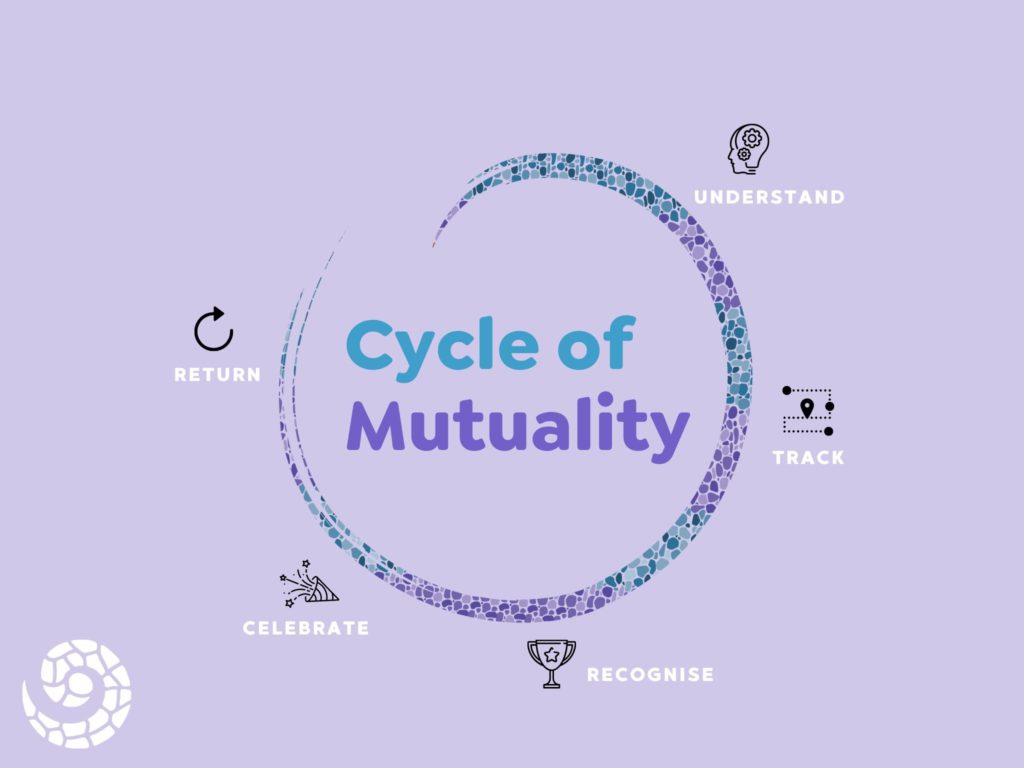
Mutuality enables a company to have staff that represent their customers, that think like their customers and that truly understand them. It is the key to achieving balance between your organisation’s workforce and the community it serves.
What is your mutuality? How do you improve your mutuality? Like any business strategy, the first step is understanding.
Revealing your hidden diversity, our mapping platform, Diversity Atlas helps you understand your team and the communities they serve.
The Diversity Index reveals your company’s current makeup. The insights provided via the interactive dashboard allow you to measure the cultural and demographic representation of your workforce.
This enables your company to build upon its strengths and counteract its weaknesses,to achievie mutuality.
Here are some simple steps you can do to achieve mutuality among your workforce.

1) Understand
Consider not only how people look but their hidden diversity. Have they grown up within a culture that had a strong impact? Do they feel an ancestral allegiance to a country they have never visited?
Understanding the true impact of cultural influences on an individual’s sense of self can greatly enhance team collaboration. It is also a resource that can be used to attract new customer bases.
Cultural understanding happens when people engage with and are willing to learn from other cultures. This can happen in everyday experiences,being raised with exposure to different cultures, spending time with a culture or simply being open to learning about other cultures.
Engaging with and learning about different cultures enhances a workforce’s ability to consider different points of view and breaks down barriers and allows for mutual understanding to be achieved.
Learning how different cultures communicate can manifest within a simple conversation (Bowe, et al. 2014). For example, conversational norms such as turn-taking, politeness and treatment of silence may hold different cultural meanings.
In Australia, along with most Western countries, organisations use census data to understand the community they serve. Many also access sources of community data collecting such as through religious organisations and UN statistics.
Our team at Cultural Infusion accesses all this data, from worldwide census data along with Ethnologue, UN Disability Statistics, OECD Library, Pew Forum, Countrymeter, Worldatlas and official government websites around the world to provide a comprehensive and detailed account of your customer base. Using this data, you can compare your workforce against your customer base allowing you to truly understand your current diversity and mutuality.
2) Track
Look at where you are now and where you want to be. Are there new business markets to explore, new industries to venture into? By assessing your current workforce’s cultural competency and potential to operate in new markets, your business may discover hidden language capabilities and understanding of geographic.
Discovering these skills can be used to present new business capital, prospective clients or entire portfolios of service offerings.
Tracking and measuring your efforts will ensure you are using the most-up-to-date metrics and cultural diversity data, thereby allowing you to market changes and fluctuations.
3) Reward
Recognise achievements and accolades of your staff that they have achieved outside of their work life to create an inclusive environment.
A UK study from 2017 found that employees who feel mutual respect in the workplace have a deeper commitment to their organisation. If your staff feel they can share, and be praised for, achievements in different parts of their life, they will be more open to bringing their whole self to work. Allow the whole team to participate in achievements and encourage the concept that a win for one is a win for all.
4) Celebrate
Cultural celebrations provide a wonderful opportunity to explore different traditions, religions and beliefs. By opening your organisation to a wide array of celebration, commemoration and awareness days, it expands your collective consciousness.
Our Diversity Atlas dashboard reveals a new reason to celebrate every day of the year – and often multiple times a day! The concept of inclusive identity, allows people to share their stories and to generally feel seen, reinforces the concept of bringing your whole self to work. Participating in the diverse and significant cultural celebrations, helps motivate the team to lean in and focus on what brings us together, rather than focussing on what tears us apart.
5) Return
Taking on board the knowledge and insights gained from the understand, track, reward and celebrate experience, start again.
This process of continual improvement ensures a dynamic workforce, one that is constantly changing and adapting to the rapidly changing nature of the world in which we live. Consider lessons learnt, highlights and new opportunities to explore a new path.
This cycle also lends itself to greater equity for all employees and better representation. By allowing and encouraging constructive criticism in all areas of the organisation from any member of the team, openness and understanding can form part of your company DNA.
Share this Post
